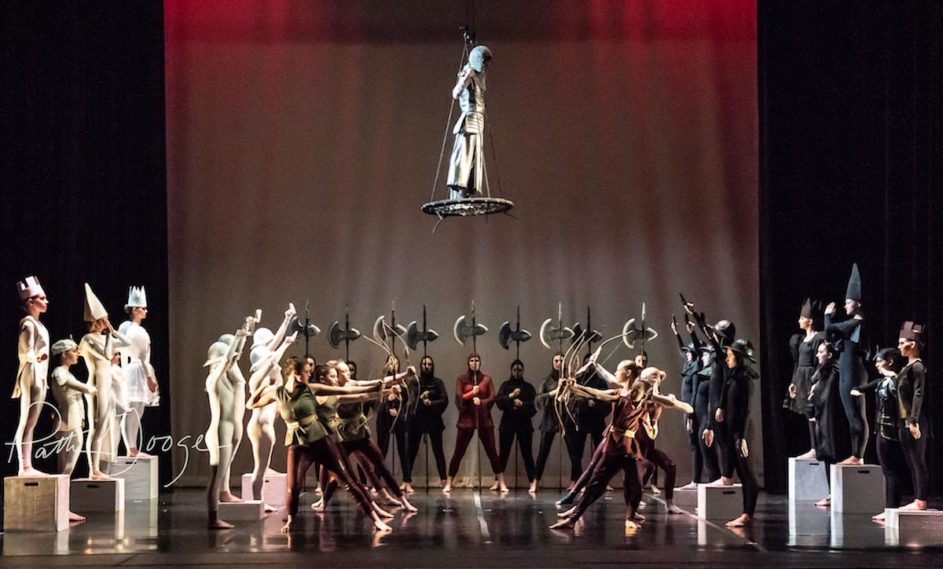One thing that was clear about GO! Contemporary Dance Works’ production of “Jehanne – the Story of Joan of Arc” last weekend at the Bijou Theatre: GO’s artistic director, Lisa Hall McKee, isn’t shy about tackling the big or important stories.
After a successful and moving production about the trials and struggles of lupus, conquering a production about Joan of Arc – headlining with the 15th-century French version of her name, “Jehanne” – was just another of her triumphs.
With consulting help from Anne-Hélène Miller, professor of medieval and 16th-century French language and literature at the University of Tennessee, who guided story scenes and costume design, McKee, her seven assistant choreographers and a cast of student dancers – more than 60 altogether – presented 30 scenes in the life of Jehanne.
Choreographed by McKee and her dancers, the show opened with scenes from Jehanne’s life presented as a shadow play, a modern, Western adaptation of Thailand’s classical Nang Yai puppet theater.
Scenes set up with large screen projections at the back of the stage followed the opening. There were beautifully and authentically costumed dancers depicting scenes with village maidens, bakers and shepherdesses. Each was separately choreographed by McKee and her assistants.
The variety of music ranged from contemporary percussion pieces to composer Jordi Savall’s medieval-sounding “Lachrimæ Caravaggio,” used as the context for the scene of “Jehanne’s Transformation” from village peasant girl to Christian soldier in the army of God.
Act II centered on Jehanne in battle, her trial for witchcraft and being burned at the stake.

The scene “Jehanne’s Death,” set as Jehanne is tied to a slanted platform, with dancers portraying bright red-orange flames dancing around her. She was tried and convicted of witchcraft because her inspiration in battle was determined to be demon possession.
The biggest and best scene in the show was “The Siege of Orléans,” an actual battle on May 8, 1429, when Jehanne led her French troops to victory over the English. It was a decisive battle in the Hundred Years’ War.
Choreographed by Harper Addison, who also portrayed Jehanne throughout the ballet, the battle was brilliantly envisioned as a chess game. Two dancers, dressed in the flag of her side of the fight, moved her soldiers, the French in white, the English in black, into position to either slay her opponent or be killed.
To capture the importance of her physical and spiritual leadership in the battle, Addison’s Jehanne, dressed in full battle armor, was symbolically and dramatically suspended high above the stage on a mesh platform.
The second brilliantly conceived scene, this one created by McKee herself, in a production of very well executed, often visually dazzling and charmingly danced stagings, was “Jehanne’s Death.” Instead of setting it as Jehanne tied to a stake, she lay on a tilted platform as dancers in flame-red voile costumes flashed and moved around her while huge projected images of flames danced on the red-orange illuminated screen at the back of the stage. It was powerful and disturbing. And ingenious. Jehanne was burned to death on May 30, 1431.
The only disappointment in this impressive and visually creative production was Jehanne herself. Addison’s portrayal lacked emotional connection to the rest of the cast around her or to the audience. She looked the part but was otherwise unconvincing as either the passionate, charismatic 17-year-old peasant girl who inspired the French to put her in charge of an army, or the 18-year-old whose vision of success as a soldier of God turned into reality.
Unfortunately, it resulted in a bucketful of impressive images and clever intellectual ideas with an emotional hole in the bottom.

